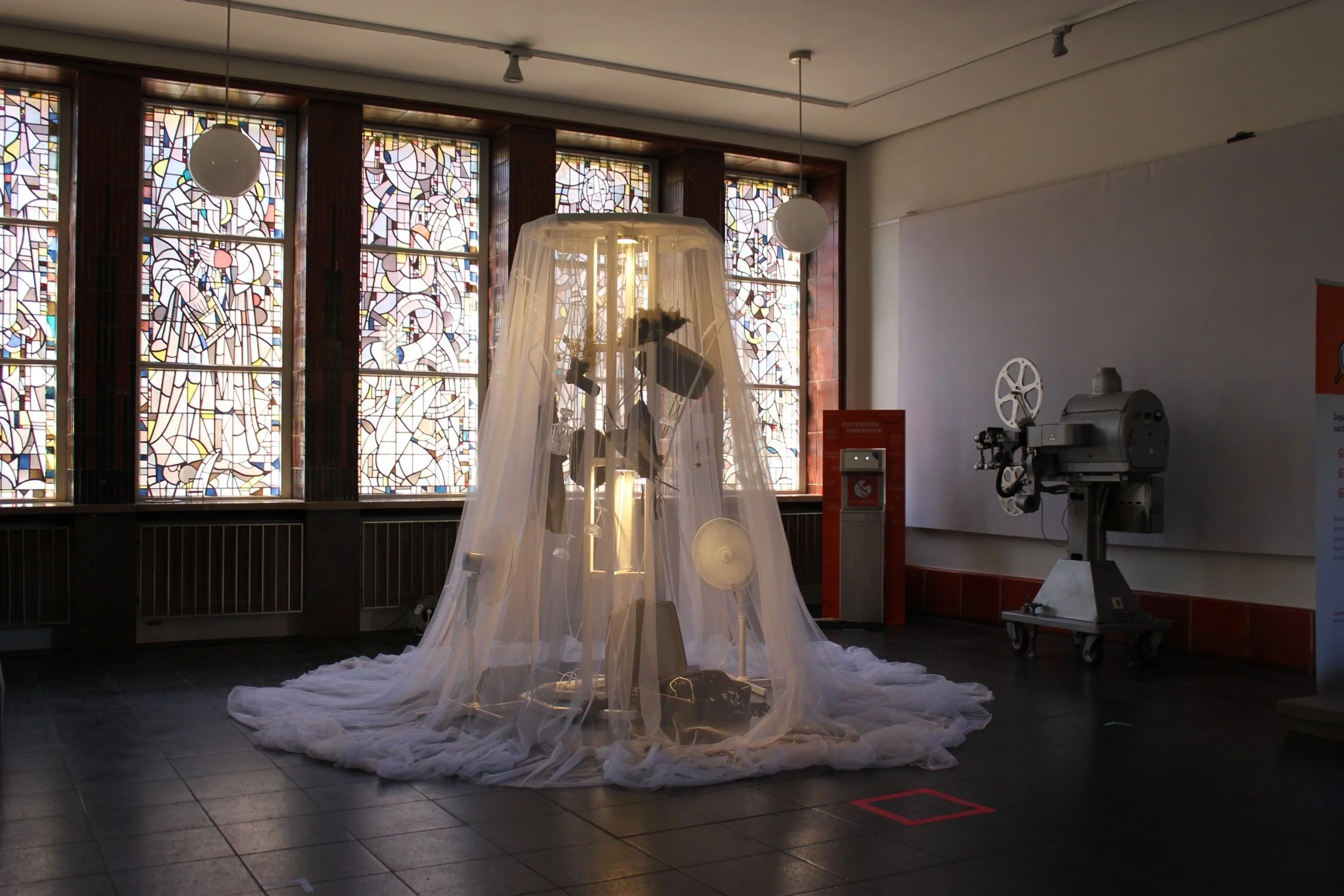femme fatale of the 1920s
installation
03/2022
In order to forget the horrors of the First World War and to escape the reality of the post-war period, the mid-1920s saw the emergence of a veritable lust for amusement. Nightlife flourishes every evening in the city's countless pubs and cabarets. Nude dancing was all the rage, and among the dancers was an icon: Anita Berber. With her dances on death, addiction and gender identity, the goddess of the night breaks with the conventions of the time and challenges the moral concepts and visual habits of her audience to the utmost. Yet the seriousness and significance of her art remained unrecognized at the time. From today's perspective, her works as well as her self-image seem downright radically feminist and reveal (in today's view) queer positions.
The installation Femme fatale of the 1920s and its elements is representative of the group of young female dancers who are not only to be associated with the seemingly glamorous show world of the 1920s. The permeable fabric in the installation conveys the mood of the women, which is intended to appear light and carefree on the outside, but is dominated by dreariness on the inside. A curtain that serves as protection to conceal the true face of one's personal state of mind. The elements of wind and sound support the contrast between what is shown and what is actually experienced.
The installation aims to encourage viewers to take a closer look at the people, their circumstances and the content, messages and background to their performances. What really lies beneath the curtain of the Golden Twenties? Are we being deceived by the outward appearance of objects left behind from this period?”
Group project with Sanna Wendhack, together we worked on the research, concept idea, graphic design, implementation, construction.





